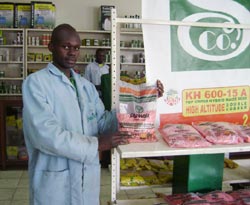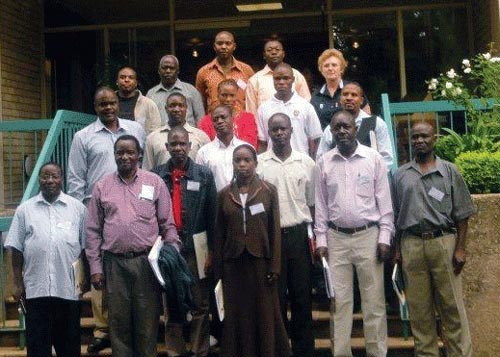CIMMYT welcomes new board members

How are New Board Members Appointed?
CIMMYT’s Board of Trustees is composed of 13 experts appointed in their individual capacity and not as a representative of any outside entity.
The process to appoint new members to the Board is conducted by the Nominations Committee, whose sole duty is to ensure a mix of skills on the Board at any one time, based on a skills matrix of CIMMYT’s required expertise. As a result, the Board will represent expertise in science (CIMMYT’s key areas of research), finance, audit, risk management, governance, international partnerships and gender and diversity. Board members are also appointed with consideration of their geographical origins. Each member is appointed for a three-year term, with a maximum limit of two terms.
The chair of the Nominations Committee leads the search for new Board members. This is done through a referencing system, rather than a formal and advertised search. Prospective candidates are approached formally and then interviewed by the Board. Newly-appointed Board members undergo an induction program conducted by CIMMYT and the CGIAR and attend their first meeting as an observer.
Dr. Feng Feng

Dr. Feng is currently the director of the Chinese Bureau of International Cooperation, NSFC. He is responsible for developing international cooperation channels with foreign partners, making policy for international research cooperation in NSFC, and setting the budget for the different research areas for international cooperation. He received his B.Sc. in plant genetics and breeding, and M.Sc. and Ph.D. in plant pathology from the Agricultural University of China.
Dr. Luis Fernando Flores Lui

Dr. Flores Lui is General Director of the Mexican Institute of Forestry, Agriculture, and Livestock (INIFAP). Over the last 25 years he has held numerous positions within the organization. At an international level he has coordinated the biotechnology group at the Asia-Pacific Council (APEC); worked with the Japan International Cooperation Agency (JICA); and has taught undergraduate and graduate courses in different universities. He received his B.Sc. in Agricultural Engineering from the Antonio Narro Agrarian Autonomous University, his M.Sc. from Irrigation Water Use and Management in 1974 from the Monterrey Institute of Technology and Higher Education and his Ph.D in Soil Sciences from the University of California, Davis.

Dr. Raúl Gerardo Obando Rodríguez
Dr. Rodriguez is the Coordinator for Research and Innovation at the National Institute of Forestry, Agriculture and Livestock (INIFAP). He is an Agricultural Engineer by trade with a PhD in Plant Nutrition at the University of California, Davis. He has held various positions in in INIA, INIFAP, the National Coordinator of the Produce Foundation (COFUPRO), the National System for Research and Technology Transfer (SNITT) and the Graduate College (COLPOS), to name a few.
Bongiwe Nomandi Njobe

Bongiwe Njobe is Executive Director (founder and sole proprietor) of ZA NAC Consulting and Investments. Over the past 20 years she has held numerous positions in the Fast Moving Consumer Goods Sector (FMCG) sector and the Agricultural Public Sector including Group Executive: Corporate Sustainability at Tiger Brands Limited, Corporate Affairs Director at South African Breweries Limited and Director General at the South African National Department of Agriculture. She currently serves as a Director on the Vumelana Advisory Fund, Independent Board Member on the Regional Universities Forum for Capacity Building in Agriculture (RUFORUM) and as a Trustee at the Kagiso Trust. She is also a member of the High Level Advocacy Panel for the Forum for Agricultural Research in Africa (FARA) and a member of the Institute of Directors (Southern Africa) Sustainability Development Forum.

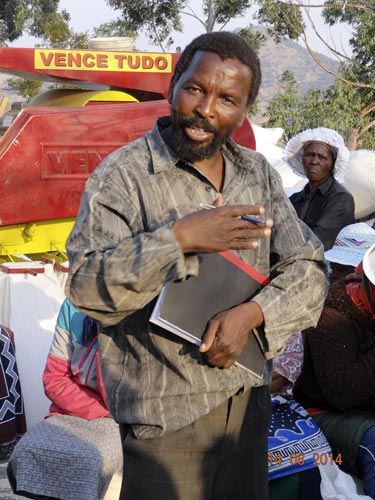
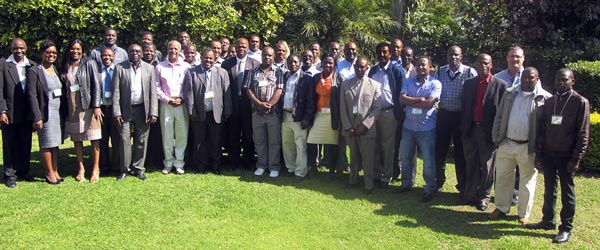
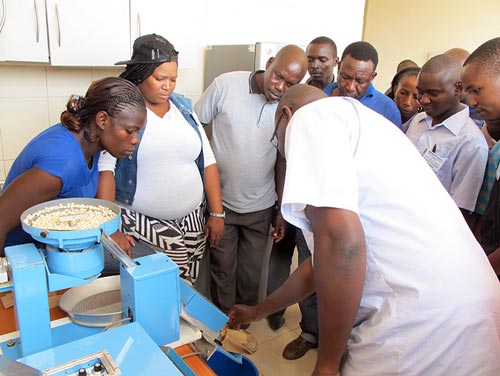
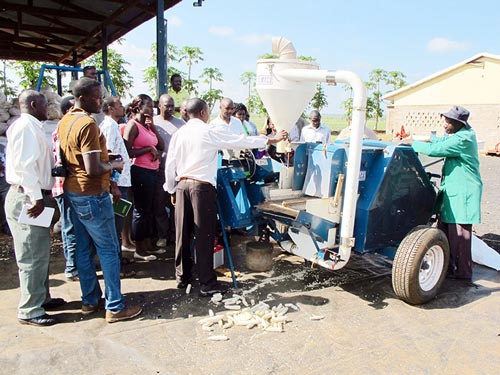
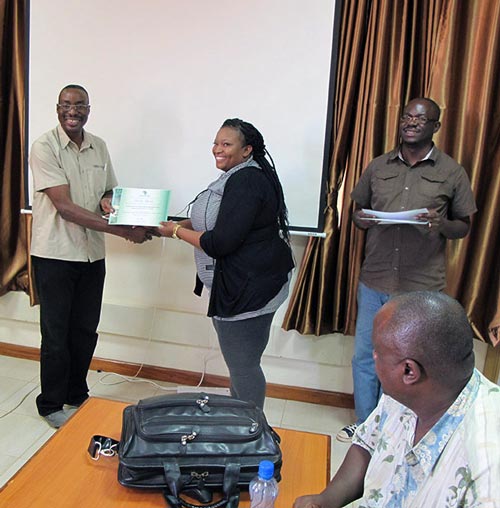
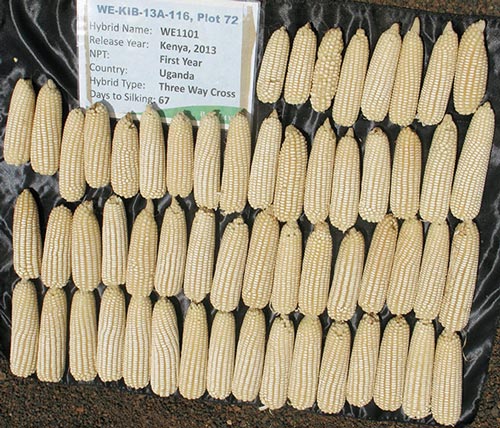
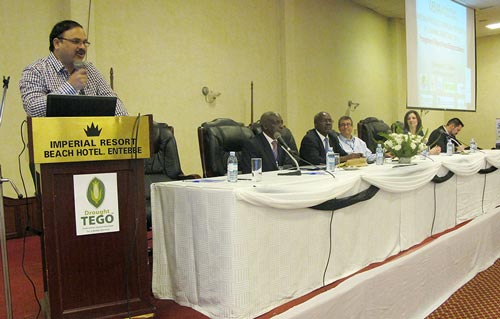
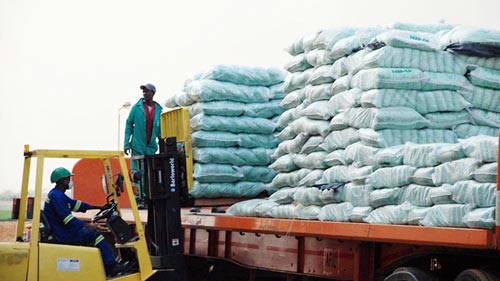 To achieve food security, smallholder farmers in Southern Africa require access to improved seed and inputs for higher yields. “Seed is one of the key movers in agricultural development,” says John MacRobert, New Seed Initiative for Maize in Southern Africa (NSIMA) leader, indicating the importance of going beyond developing improved seed varieties to encompass their dissemination, promotion, and adoption in developing strategies around seed development. These issues, together with NSIMA’s to date progress (the project is in its third phase) and strategies for the next phase, were discussed at a meeting in Lusaka, Zambia, during 7-9 August 2013. About 50 participants from institutions collaborating on the project led by CIMMYT and funded by the Swiss Agency for Development and Cooperation (
To achieve food security, smallholder farmers in Southern Africa require access to improved seed and inputs for higher yields. “Seed is one of the key movers in agricultural development,” says John MacRobert, New Seed Initiative for Maize in Southern Africa (NSIMA) leader, indicating the importance of going beyond developing improved seed varieties to encompass their dissemination, promotion, and adoption in developing strategies around seed development. These issues, together with NSIMA’s to date progress (the project is in its third phase) and strategies for the next phase, were discussed at a meeting in Lusaka, Zambia, during 7-9 August 2013. About 50 participants from institutions collaborating on the project led by CIMMYT and funded by the Swiss Agency for Development and Cooperation (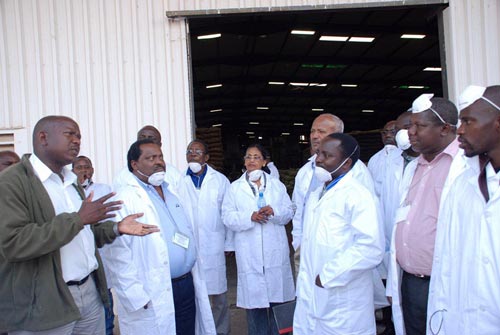 But do smallholder farmers have access to the new seeds, technologies, and information? The answer is often no. “Integrating stress tolerant maize and legumes, such as pigeon peas, beans, and cowpeas, leads to sustainable production systems. We need effective seed road maps to enhance access and availability of improved maize and legume seeds,” CIMMYT regional director for Southern Africa Mulugetta Mekuria said, giving an example of one such gap in the system.
But do smallholder farmers have access to the new seeds, technologies, and information? The answer is often no. “Integrating stress tolerant maize and legumes, such as pigeon peas, beans, and cowpeas, leads to sustainable production systems. We need effective seed road maps to enhance access and availability of improved maize and legume seeds,” CIMMYT regional director for Southern Africa Mulugetta Mekuria said, giving an example of one such gap in the system.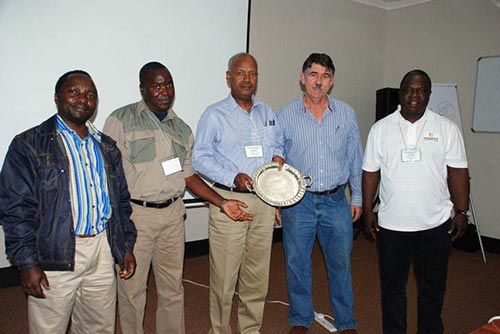 “Private sector players steer away from smallholders viewing them as high risk because of their poor infrastructure, lack of credit, and land tenure, while governments may not view them as a viable investment,” Jenrich summarized the lack of interest in smallholders’ problems. Zaka Superseeds proves them wrong; cooperating with smallholders can, in fact, be beneficial for seed companies, as they can work more closely with the community consuming their seed. Zaka, for example, is removing a product from its selection after consultations with the community during which they found out the discussed maize variety has a long maturity period and is thus undesirable.
“Private sector players steer away from smallholders viewing them as high risk because of their poor infrastructure, lack of credit, and land tenure, while governments may not view them as a viable investment,” Jenrich summarized the lack of interest in smallholders’ problems. Zaka Superseeds proves them wrong; cooperating with smallholders can, in fact, be beneficial for seed companies, as they can work more closely with the community consuming their seed. Zaka, for example, is removing a product from its selection after consultations with the community during which they found out the discussed maize variety has a long maturity period and is thus undesirable.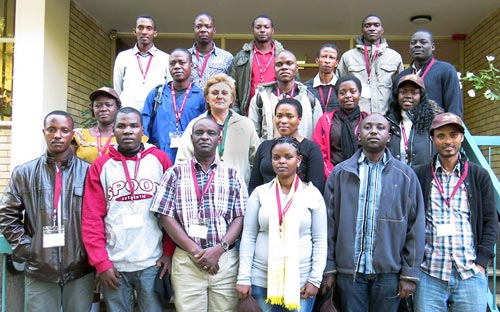 Fifteen young scientists from
Fifteen young scientists from 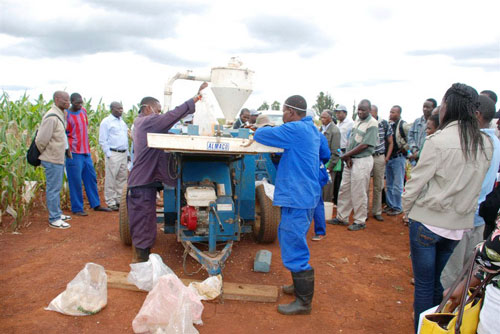 The field day was followed by a feedback session and a technical seminar on the maize lethal necrosis (MLN) disease that has emerged recently in East Africa. During the seminar presented by Magorokosho and MacRobert, principal director of the Department of Agriculture Research Services Danisile Hikwa expressed her appreciation to CIMMYT for its efforts to develop MLN resistant varieties.
The field day was followed by a feedback session and a technical seminar on the maize lethal necrosis (MLN) disease that has emerged recently in East Africa. During the seminar presented by Magorokosho and MacRobert, principal director of the Department of Agriculture Research Services Danisile Hikwa expressed her appreciation to CIMMYT for its efforts to develop MLN resistant varieties.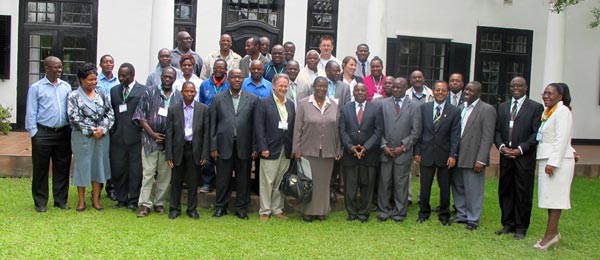
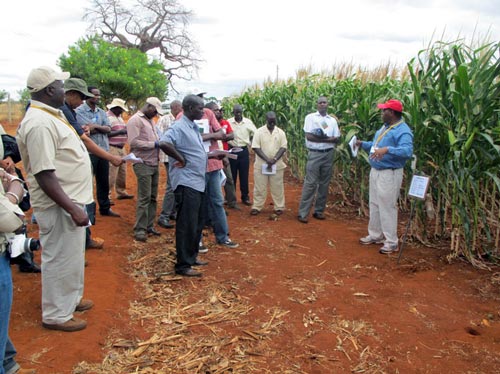 Twenty-nine drought-tolerant, early maturing, disease-resistant hybrids developed by the Water Efficient Maize for Africa (WEMA) project are getting ready to be released, a huge success for WEMA and all its stakeholders. “The 29 hybrids advanced to national performance trials is a record release by an entity in Africa in all times. These high performing hybrids yield 20–35 % more grain under moderate drought compared to 2008 commercially available hybrids,” said Stephen Mugo, CIMMYT principal scientist and co-chair of the WEMA Product Development Team. “Let us seize the technological opportunities that are there to boost productivity and people’s welfare,” he added. The white hybrids resistant to stem borers, maize weevils, and large grain borer, and to diseases such as grey leaf spot, northern leaf blight, and maize streak virus will complement other drought tolerant hybrids developed and released by the Drought Tolerant Maize for Africa (
Twenty-nine drought-tolerant, early maturing, disease-resistant hybrids developed by the Water Efficient Maize for Africa (WEMA) project are getting ready to be released, a huge success for WEMA and all its stakeholders. “The 29 hybrids advanced to national performance trials is a record release by an entity in Africa in all times. These high performing hybrids yield 20–35 % more grain under moderate drought compared to 2008 commercially available hybrids,” said Stephen Mugo, CIMMYT principal scientist and co-chair of the WEMA Product Development Team. “Let us seize the technological opportunities that are there to boost productivity and people’s welfare,” he added. The white hybrids resistant to stem borers, maize weevils, and large grain borer, and to diseases such as grey leaf spot, northern leaf blight, and maize streak virus will complement other drought tolerant hybrids developed and released by the Drought Tolerant Maize for Africa (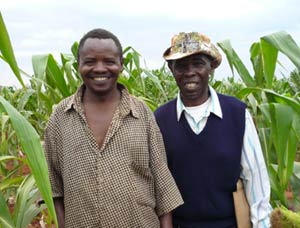 In the 2006-07 cropping season, 82 registered maize seed companies produced the bulk of just over 100,000 tons of improved maize seed that were marketed in the major maize producing countries of eastern and southern Africa (excluding South Africa) — enough to sow 35% of the maize land in those countries.
In the 2006-07 cropping season, 82 registered maize seed companies produced the bulk of just over 100,000 tons of improved maize seed that were marketed in the major maize producing countries of eastern and southern Africa (excluding South Africa) — enough to sow 35% of the maize land in those countries.